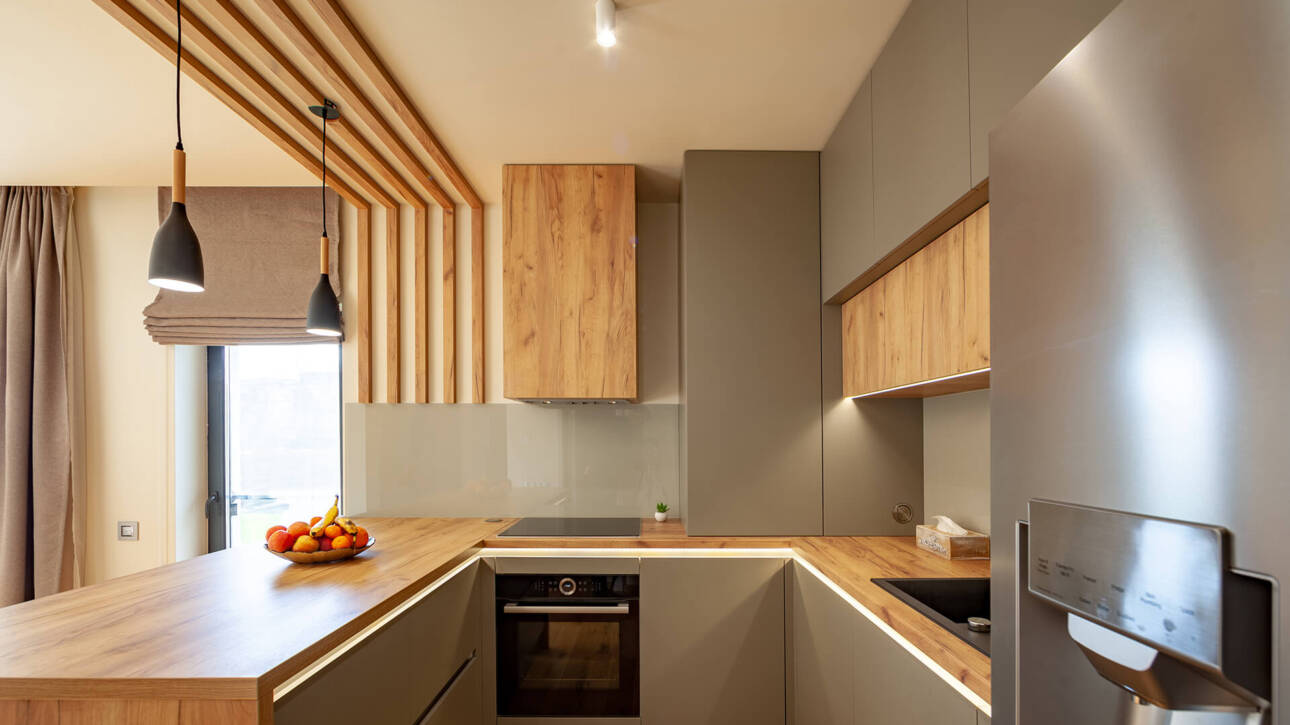Questions For Denver Home Remodeling Contractors?
Get in Touch!
Local FAQ From Denver Home Remodeling Contractors
Our estimate process is performed onsite during a one-hour appointment. We review the existing structures as we talk about your vision. We take measurements and inspect the condition of existing space to identify any potential challenges or considerations that need to be addressed during the remodel.
Once we have the scope of work defined, we will ask about your budget range to make sure the solution we propose is feasible and meets your objectives.
The timeline for a remodeling project depends on factors such as the size and complexity of the project, availability of materials, and the contractor’s schedule.
It depends on the extent of the remodel and your tolerance for disruption. For major renovations, you may need to temporarily relocate or persue alternate living arrangements to minimize inconvenience. If remodeling your kitchen, you will want to plan a solution for preparing meals while the kitchen is unavailable for use.
The return on investment (ROI) for a remodel project can vary widely depending on factors such as the scope of the project, the local real estate market, the quality of the workmanship, and the specific upgrades made. Generally, certain remodel projects tend to provide a higher ROI compared to others. Here’s a breakdown of some common remodel projects and their average ROI:
Kitchen Remodel: A kitchen remodel is often considered one of the most valuable investments in terms of ROI. According to Remodeling Magazine’s Cost vs. Value report, a minor kitchen remodel typically recoups around 70-80% of its cost at resale, while a major kitchen remodel can recoup around 60-70% of its cost.
Bathroom Remodel: Similar to kitchens, bathroom remodels tend to offer a good ROI. A midrange bathroom remodel can recoup around 70-80% of its cost, while an upscale bathroom remodel may recoup around 60-70% of its cost.
Exterior Upgrades: Curb appeal plays a significant role in a home’s value, so exterior upgrades such as replacing siding, adding a new front door, or updating landscaping can provide a solid ROI. These projects typically recoup anywhere from 60-80% of their cost at resale.
Adding a Deck: Adding a deck can expand outdoor living space and enhance the appeal of a home. Depending on the materials used and the size of the deck, homeowners can expect to recoup around 70-80% of the cost at resale.
Attic Insulation: While not as glamorous as other remodel projects, adding attic insulation is a cost-effective upgrade that can improve energy efficiency and comfort. This project typically offers a high ROI, with homeowners recouping around 100-110% of the cost at resale due to energy savings.
Basement Remodel: Finishing or remodeling a basement can add valuable living space to a home. The ROI for basement remodels can vary widely, but homeowners can typically expect to recoup around 50-70% of the cost at resale.
Here are some common ways to finance a remodeling project:
Cash: Paying for the remodel with cash is the simplest and most straightforward financing option. If you have enough savings or funds set aside specifically for home improvements, paying cash can help you avoid interest charges and debt.
Home Equity Loan (HEL) or Home Equity Line of Credit (HELOC): Home equity loans and lines of credit allow homeowners to borrow against the equity in their home. With a home equity loan, you receive a lump sum of money upfront and repay it over time with fixed monthly payments and a fixed interest rate. A HELOC, on the other hand, works more like a credit card, allowing you to borrow money as needed up to a predetermined credit limit and repay it with variable interest rates. Both options typically have lower interest rates compared to personal loans or credit cards because they are secured by your home.
Cash-Out Refinance: A cash-out refinance involves replacing your existing mortgage with a new one that’s larger than your current loan balance. The difference between the new loan amount and your existing mortgage balance is paid out to you in cash, which you can then use to fund your remodeling project. Cash-out refinances typically have lower interest rates compared to other forms of borrowing, but they also reset the terms of your mortgage, potentially increasing your monthly payments and extending the time it takes to pay off your home.
Personal Loan: Personal loans are unsecured loans that can be used for various purposes, including home improvements. They typically have fixed interest rates and repayment terms, making it easier to budget for monthly payments. However, personal loans may have higher interest rates compared to home equity loans or lines of credit, and they may be more difficult to qualify for if you have less-than-perfect credit.
Credit Cards: Using credit cards to finance a remodeling project is an option, but it’s generally not recommended unless you can pay off the balance in full each month to avoid high interest charges. Some credit cards offer promotional financing with low or zero interest rates for a limited time, which can be a convenient way to fund a project if you’re able to pay off the balance before the promotional period ends.
Government Loans and Grants: In some cases, homeowners may qualify for government-backed loans or grants to fund home improvement projects, particularly if the renovations are aimed at improving energy efficiency or accessibility. Programs such as the Federal Housing Administration’s 203(k) loan program or the Department of Energy’s Weatherization Assistance Program provide financing options for eligible homeowners.
Before choosing a financing option, it’s important to carefully consider your financial situation, evaluate the terms and conditions of each option, and choose the one that best fits your needs and preferences. Additionally, consulting with a financial advisor or loan officer can help you make an informed decision and navigate the borrowing process. If you need support, we’re happy to assist and point you in the right direction.
Communicate openly with your contractor, make decisions promptly, and avoid making frequent changes to the scope of work once construction has begun.







